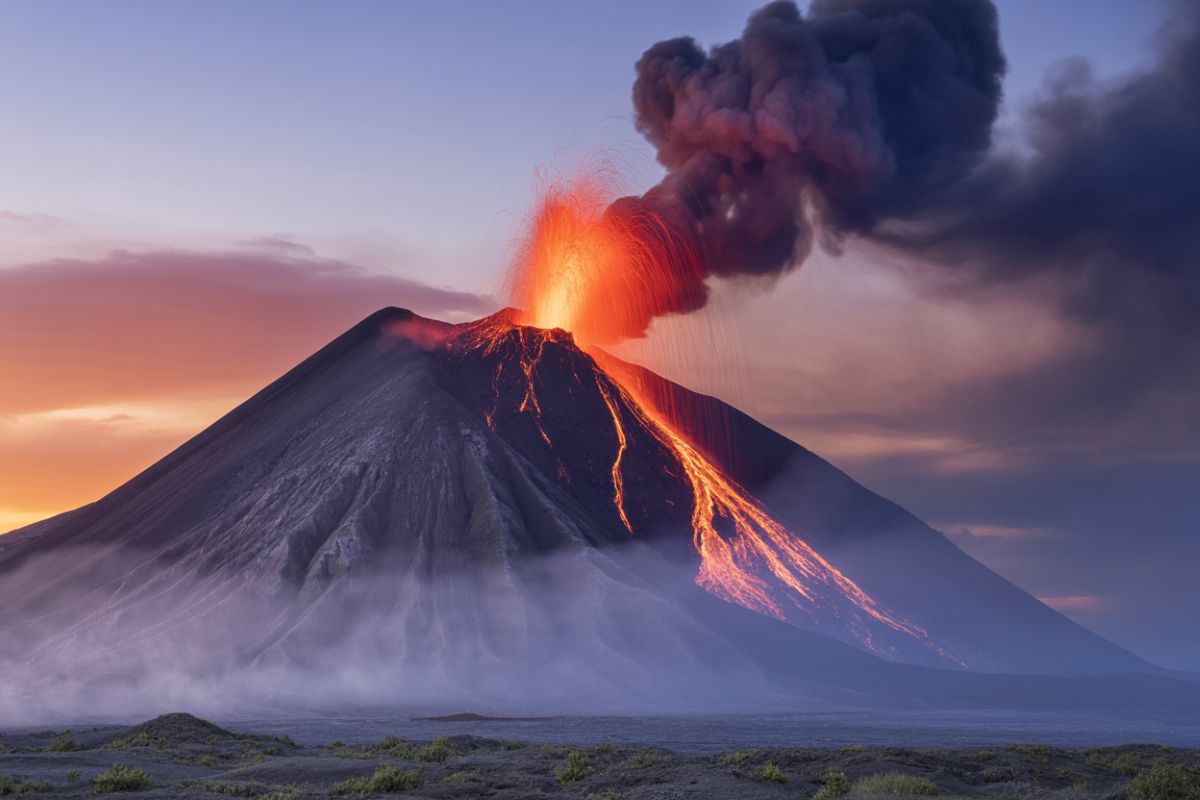Home » TRAVEL ALERT » University Based Professor from US introduces New Models to Predict Volcanic Slope Collapses, Offering Vital Early Warnings for Tourists and Communities
Published on
October 5, 2025
Volcanoes are capable of causing widespread devastation and fatalities, particularly due to lava dome collapses during eruptions. This was unfortunately the case during the catastrophic eruptions of Mount St. Helens in 1980 and of Anak Krakatau in 1883. Therefore, to avoid similar tragedies, Christelle Wauthier, Associate Professor at Penn State University has developed new forecasting models to predict collapses, considering the safety of local residents and tourists visiting the sites of the volcanoes. This new predictive model would be able to provide an early warning which would allow time for evacuations and other emergency management actions.
Understanding the New Tool for Volcano Collapse Forecasting
Developed by Christelle Wauthier, Associate Professor at Penn State University, the new models focus on predicting when the sides of volcanoes, known as flanks or slopes, may collapse, causing dangerous landslides and triggering tsunamis. Such collapses have proven devastating in the past, particularly at locations like Mount St. Helens and Anak Krakatau. The collapse of these volcanoes has been responsible for some of the deadliest natural disasters in history, often exacerbated by tsunamis that strike coastal areas.
The breakthrough models use real-world data to simulate how volcano slopes respond to rising magma pressure. By understanding the stability of these volcanoes, scientists hope to forecast potential collapses well in advance, giving authorities the time needed to protect vulnerable populations, including tourists.
The Danger of Volcanic Collapses and Tsunamis
Volcanoes in subduction zones, such as those in Indonesia, Alaska, and Hawaii, are particularly susceptible to eruptions that may cause landslides and tsunamis. When volcanic material is ejected violently, it can destabilise the surrounding rock structures, leading to catastrophic collapses. The 1980 eruption of Mount St. Helens in Washington and the 2018 eruption of Anak Krakatau in Indonesia are prime examples of this risk.
Scientists are now using sophisticated tools to better understand these disasters, hoping to predict where these collapses are most likely to occur. With this knowledge, researchers aim to provide early warnings for affected areas, especially those near volcanic activity, where tsunamis can follow.
How the New Models Work
The new models, developed by Wauthier and her team, focus on the physical properties that make volcano slopes unstable. Specifically, they look at the interaction between rising magma and existing faults in the earth’s crust. When magma pushes upwards, it can apply immense pressure to the surrounding rocks, often triggering slippage along these fault lines. The research team has identified key areas where this slippage is more likely to occur, helping predict when and where a volcano’s flank might collapse.
In addition to examining fault dips, or the angles of fractures in the earth’s crust, the researchers also studied topography and surface features to determine which areas of the volcano are most susceptible to collapse. This information can help authorities place monitoring equipment, such as seismometers and GPS sensors, in the right locations to track the stability of volcano slopes in real-time.
Benefits for Local Communities and Tourists
This forecasting tool offers a significant improvement in disaster preparedness for regions near active volcanoes. For communities living near volcanoes such as Mount St. Helens, Anak Krakatau, or the Aleutian Islands, these models can provide vital information to local authorities, enabling them to take preventive measures, issue warnings, and conduct evacuations before disasters strike. In the past, many volcanic collapses have occurred suddenly, leaving little time for emergency responses.
For tourists visiting these volcanic areas, the development of this forecasting tool offers peace of mind. Destinations such as Hawaii, Indonesia, and Japan attract millions of visitors each year, many of whom seek to explore volcanoes as part of eco-tourism or adventure travel. While volcanic activity is always a risk, the ability to predict collapse events could help mitigate this danger, ensuring that visitors can experience these natural wonders safely.
By placing sensors and monitoring equipment in areas with high-risk slopes, authorities can give tourists ample time to evacuate if a collapse is imminent. This technology also allows tourists to make informed decisions about which areas to visit, as they can be assured that their safety is being actively monitored.
A Step Toward Safer Volcano Tourism
Volcanic tourism, or volcano tourism, is becoming increasingly popular, with destinations such as Hawaii’s Kilauea and Japan’s Mount Fuji attracting visitors from all over the world. As more people flock to witness these awe-inspiring natural landscapes, ensuring their safety has become a key priority for local governments and tourism operators.
This new tool plays a crucial role in protecting the tourism industry, ensuring that volcanic attractions can be enjoyed safely. Tourists who may have been hesitant to visit volcanoes due to concerns about potential disasters can now feel more confident in their safety, knowing that local authorities have the technology to track and predict dangerous events.
Enhancing Safety and Understanding of Volcanoes
The creation of volcano flank collapse forecasting models represents an important achievement in environmental science and disaster prevention. By better comprehending volcanic behaviour and offering instruments to forecast collapses and tsunamis, researchers are opening the way to more secure tourism and communities in volcanic areas.
For travellers who want to witness the natural splendor and thrill of volcanoes, this latest aid gives them comfort, knowing their safety is being taken seriously. As these forecast models become more advanced, they will be an integral aspect of disaster preparedness and public safety measures in volcanic areas around the globe.

